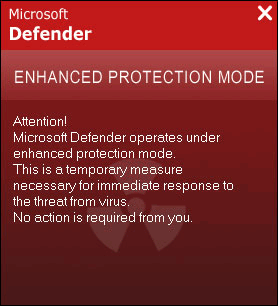NSudo Malware
In the realm of cybersecurity, the evolving landscape of malware continues to surprise and challenge security experts. One such example is the NSudo malware, detected as Win64/NSudo!MSR. NSudo, a legitimate Windows component, has been exploited by malware developers to gain unauthorized administrative privileges. This underscores the ingenuity of cybercriminals in repurposing legitimate tools for harmful intent.
Indeed, the legitimate functionalities of NSudo have been exploited by malware developers to carry out attacks with escalated administrative privileges. The malware variant Win64/NSudo!MSR leverages NSudo's capabilities to execute threatening operations, enabling the malware to manipulate the system at a deeper level.
An NSudo Infection could Lead to Severe Consequences for Victims
Trojan malware represents a multifaceted and persistent threat to the security of computers. One of its primary dangers lies in its deceptive nature, as Trojans often masquerade as legitimate and harmless files or applications. This enables them to infiltrate systems undetected, exploiting the trust of users.
Once inside a system, Trojans unleash a range of nefast activities, with data theft being a significant peril. These insidious programs excel at covertly extracting private information, including login credentials, financial details and personal files. This collected data can then be exploited for identity theft, financial fraud, or other illicit purposes.
Trojans also establish backdoors on infected systems, providing unauthorized access to cybercriminals. This backdoor access grants attackers the ability to manipulate the system, install additional malware, or use the compromised system as a launching pad for further cyber assaults.
Beyond data theft and unauthorized access, Trojans possess the capability to modify system files, settings and the registry. This can result in system instability, crashes, and a myriad of performance issues, adversely affecting the overall functionality of the compromised system.
Some Trojans are designed for espionage, engaging in spying activities by activating webcams, capturing screenshots or recording keystrokes. This surreptitious surveillance can have severe implications for user privacy and security.
NSudo and Trojan Threats could Use Numerous Infection Vectors
Trojan malware attacks employ various infection vectors to infiltrate and compromise computer systems. These vectors are diverse and often rely on deceptive tactics to exploit vulnerabilities. Here are some typical infection vectors used in Trojan malware attacks:
- Email Attachments and Links:
- Trojan malware often disguises itself as legitimate email attachments or links. Unsuspecting users may open an attachment or click on a link, initiating the download and execution of the Trojan onto their system.
- Unsafe Websites:
- Visiting compromised or unsafe websites can expose users to Trojan infections. Cybercriminals may embed Trojans in seemingly harmless downloads or utilize drive-by-download techniques, exploiting vulnerabilities in browsers or plugins without the user's knowledge.
- Phishing Attacks:
- Phishing campaigns involve the use of deceptive emails, messages, or websites that mimic legitimate entities to trick users into divulging sensitive information. Trojans can be delivered through phishing emails, leading users to download malicious files or click on compromised links unwittingly.
- Infected Peripheral Devices:
- Trojans can be introduced to a system via infected peripheral devices such as USB drives or external hard disks. When users attach these devices to their computers, the Trojan may execute and spread to the host system.
- Social Engineering Tactics:
- Social engineering techniques, which involve manipulating individuals into divulging confidential information or taking specific actions, are frequently used to deliver Trojan malware. This could include enticing users to click on malicious links, download infected files or provide sensitive information.
- Watering Hole Attacks:
- In a watering hole attack, cybercriminals compromise websites frequented by a specific target audience. By injecting Trojans into these websites, attackers increase the likelihood of infecting users who visit the compromised sites.
Understanding these typical infection vectors is crucial for users and organizations to implement robust cybersecurity measures, including regular software updates, user education on phishing awareness, and the use of reputable security software, to mitigate the risks associated with Trojan malware attacks.


